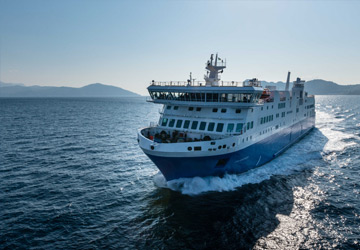
-
Recent Searches
Recent Searches
- My Account
- Customer Service
-
Ireland
Napoli to Catania Ferry
The Napoli Catania ferry route connects Italy with Sicily. Currently there is just the 1 ferry company operating this ferry service, TTT Lines. The crossing operates up to 7 times each week with sailing durations from around 12 hours.
Napoli Catania sailing durations and frequency may vary from season to season so we’d advise doing a live check to get the most up to date information.
Napoli to Catania Ferry Alternatives
-

-
Get price
-
-

-
Get price
-
-

-
Get price
-
-

-
Get price
-
-

-
Get price
-
-

-
Get price
-
-

-
Get price
-
-

-
Get price
-
Napoli Catania Average Prices
Prices shown represent the average one way price paid by our customers. The most common booking on the Napoli Catania route is a car and 2 passengers.
Napoli Catania Ferry reviews
-
"A very pleasant passage. "
We had a very pleasant crossing from Naples to Catania. The staff were all courteous and helpful and our cabin was clean and comfortable.
'Robin' travelled Napoli Catania with TTT Lines
Read More Read Less -
"Convenient, comfortable and enjoyable"
I recently read bad reviews about the ferries in Italy. This trip from Napoli to Catania Sicily was perfect. The cabins were larger than I'd expected, the self service restaurant food looked great. Everything was easy, getting on and off (however the boat was not that full).
'Jane' travelled Napoli Catania with TTT Lines
Read More Read Less -
"Napoli - Catania"
Great trip! Slept well and woke up at 6AM to see sunrise and Mt Etna
'Piotr' travelled Napoli Catania with TTT Lines
Read More Read Less -
"Napoli-Catania ferry"
We did the return journey. Very clean ferry and early in both directions. Nice cabins with good showers and a/c. Good food for a ferry too.
'Nick' travelled Napoli Catania with TTT Lines
Read More Read Less
Napoli Guide
The Italian city of Naples, or Napoli as it is also called, is located in the Campania region of the country and lies on the Gulf of Naples, on southern Italy's west coast. The city is located in an enviable position between two volcanic areas, Mount Vesuvius and the Campi Flegrei. The Roman ruins of Pompeii, Herculaneum, Oplontis and Stabiae, which were destroyed the eruption of Vesuvius in 79 AD, are located close to the city as is the city of Sorrento and the beautiful Amalfi Coast. Also located close to Naples are the former parts of the Roman naval facility of Portus Julius, namely the port towns of Pozzuoli and Baia which are both to the north of Naples. The city is adorned with medieval, Baroque and Renaissance churches, castles and palaces and has long been an important centre for the arts and architecture. In the 18th century, Naples went through a period of neoclassicism, following the discovery of the remarkably intact Roman ruins of Herculaneum and Pompeii.
The port of Naples is home to several ferry, hydrofoil and SWATH (Small Waterplane Area Twin Hull) catamaran services, linking numerous locations in both the Neapolitan province, including Capri, Ischia and Sorrento, and the Salernitan province, including Salerno, Positano and Amalfi. Ferry services also operate to Sicily, Sardinia, Ponza and the Aeolian Islands.
Catania Guide
Catania is located on the east coast of Sicily on the Ionian Sea and is the second largest city in Sicily and sits under the imposing shadow of Mount Etna, or A Muntagna as the locals call it. The volcano has had a significant influence on the city's history and its actual existence, having destroyed the city on several occasions. The most destructive being an eruption in the 17th century. Catania was covered in lava in 1669 and then 24 years later, in 1693, an earthquake shook the town to its foundations.
A popular attraction in the city, located on the edge of the town's square is the Cathedral which is dedicated to St. Agata, the city's patron saint. The cathedral stands on the site of an earlier 11th century church that was almost entirely destroyed in the 1693 earthquake. The imposing cathedral's baroque architectural style incorporates Roman columns taken from an amphitheatre. There are more Roman elements in the cathedral as beneath there are some Roman baths. The Baroque theme continues within the cathedral's interior with several ornate chapels and a fresco depicting the 1693 earthquake. Catania's most famous son, Bellini, is buried in the cathedral as are three Aragonese Kings: Frederick II, Louis and Frederick III.




